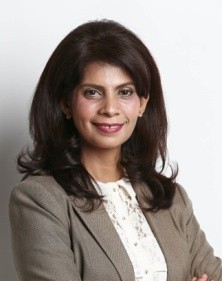Case Document
BHINNEKA.COM: BE ONLINE OR BE AVERAGE?
In December 2002, Hendrik Tio was ready for strategic meeting with board of directors to discuss the future of P.T. Bhinneka Mentari Dimensi. As Director and founder, Hendrik felt that the company has gone through a lot; Indonesian’s economic crisis in 1998, the dotcom crash, and now, once again, the company faced something that nobody was familiar with: the internet.
During economic crisis in 1997, due to deterioration of market buying power, Bhinneka was forced to diversify its business from IT solutions provider to a computer accessories manufacturer, furniture manufacturer and shrimp business. In June 1999, Hendrik decided that the company should return to its original business of providing IT solutions and insisted that the company start building its reputation as the pioneer of e-commerce by going online.
The dotcom euphoria didn’t last very long, because in 2001, the dotcom crash started. However, some strong companies actually survived the crash in US, such as Amazon.com. The same phenomenon happened in Indonesia. Some online shops such as Bebita.com, Dialmart.com, even Lipposhop.com could not get enough revenue to cover their operational costs; the only reason why they were still in the market was due to their belief that the internet would be the future of business. Bhinneka.com likewise was not making enough profit. However, it had gained high brand awareness due to its website and the number of visits grew steadily.
As Hendrik walked toward the meeting room, some thoughts came to mind;: should he stop the online retail business before it’s too late, or should he continue it by altering his existing business model? Some facts that happened around the world as well as in Indonesia worried him. What should Bhinneka.com do to maintain its position and grow given the unpredictable nature of cyberworld?
`HIGH REACH` DAYCARE: EXPANDING THE BUSINESS
The time was approaching 5.45 p.m. A mother was hurriedly moving towards an elevator in Jakarta’s golden triangle apartment while checking on her wrist-watch at times. Reaching the second floor, he sound of small kids could be heard coming from a Daycare with noticeable design on the same floor. As she approached the Daycare entrance, her face became radiant. She walked faster in order to see her sweetheart. Inside the Daycare, a cute little girl rushed towards the mother accompanied by a neat uniformed Daycare staff. She explained to the mother all the activities her daughter has done during the day according to the note written in the agenda. The mother listened to it with full interest while carrying her three years cute daughter.
Dr. Lukiarti, the Director and the person in charge of the daily activities of the High Reach Learning Care Institution was observing each of the picking up activities of the children under her observation. She also spoke to a few parents on the subjects that needed further explanation regarding the kids’ development. These routine interactions with parents are done to make sure that everything runs smoothly and under control.
After the children’s pick-up operation was completed, Ibu Luki, this was how Dr.Lukiarti was addressed by her colleagues, entered her office and sat down on a chair in the corner of the room. Her eyes did not show tiredness although she is in her early fifties. She quickly picked up a folder from the table which contained to pieces of proposals on the business development. For the past one week her mind had been preoccupied with these proposals. It was not a simple offer and hard to be chosen: Franchising the Daycare business which had been developed for one year or developing the business organically, collaborating with a few office buildings. The periodic meeting of the High Reach founders / share holders would be held in an hour’s time. The discussion on the development of this Daycare business was one of her agendas. She picked up her glasses and started making deeper analysis on the pros and cons of the two offers.
STARBUCKS INDONESIA: BACK AND FORTH IN CUSTOMER’S PERCEPTION
One still could vividly remember when Starbucks first opened its first store at Seattle, United States of America on 1972 and the hype suddenly went breakthrough like a wildfire from the State only into nationwide and upon 1996, Howard Schultz as Starbucks’ owner decided to go international.
It wasn’t long before that when Starbucks opened its first store in Indonesia and the buzz that already went along the words that already whispered in everyone’s ears gone crazy. The cozy ambience and the promise of “delivering the best coffee only for you” from the company to the consumers have been the magic words among Indonesia’s socialite and all in sudden, Starbucks’ coffee stores flocked with people. Now everybody could enjoy their nice cup of Frappuccino™ or Café Americano at the good-looking place with sweet and slow jazzy tunes at every Starbucks coffee store or simply grab the signature cup of Starbucks and bring it everywhere, be it campus, school, office or simply for hangout purpose.
The opportunity for Starbucks at that time when they entered Indonesia market was still big for there were only several small players at Indonesia. Coffee store and café business never been taken seriously and people accepted coffee-drinking activities as side activity which did not have any added value for any other means. Indonesian even didn’t recognize coffee as one of their primary habits. However, the hype started around 1999, not so long after the crisis that hit several regions at Southeast Asia. Indonesia, by any means, considered as a very interesting place for Starbucks to expand. However not so long after the trend started, recently nowadays Starbucks isn’t the only player at Indonesia. Thanks for the hype and buzzwords, more and more competitors barged into the market, be it from foreign players (Gloria Jean’s Coffee, The Coffee Bean and Tea Leaf) or domestic players (Bakoel Koffie, Bengawan Solo Coffee) and all of them even offered similar beverages and “experience” as same as Starbucks. They create same ambience, same coffee and even, same packaging – only in different brand name and label.
This kind of situation forced Starbucks to think hard and long because even though Starbucks already got big name and big time at United States where it is originally came from, the market in Indonesia is totally different. They are playing at different culture, different consumer’s expectations and even different purchasing power and Starbucks realized it clearly that in order to survive in this volatile market of Indonesia they should take the right approach.
YAMAHA MIO: WHEN A MOTORCYCLE ACQUIRES A ‘GENDER’
On October 2006, Bambang Asmarabudi, General Manager of Marketing and Promotion of Yamaha Motor Kencana Indonesia (YMKI), was irritated as he and his team would face Mid-Year meeting the next day.
The fact that only ten to thirteen percent of these female inhabitants were motorcyclists made very large open market for prospective female consumer. From the supplier side, it seemed manufacturers were aware of the fact, but they were unsure of this female market prospect.
Although the sales unit sales grew from 2003 to 2006, Bambang was irritated by the reality that Yamaha Mio was not bought by women as target market. He wondered if he and his team should make adjustments to the marketing strategy facing this unexpected trend.
THE DIGITAL BEAT (DB): THE INDONESIAN FIRST DIGITAL MUSIC SHOP
Budi Raharjo has been interested in participating in the digital music business since he saw the big music market still ignored by the Major Labels recoding companies. In his blog, Budi often receives complaints from the amateur musicians who want to take action in the recording world or distribute their music recording product, but they still meet with a lot of obstacles.
According to Budi Raharjo, a Canadian doctor graduate, to run a musical digital shop is to meet the continuous need for music which becomes more personal day by day. The consumers need more choices of songs. Unfortunately Budi thinks, there are still many people who like to buy pirated CD and MP3 or illegally downloading songs in the internet. He thinks then why don’t we provide software that makes downloading legal.
COPYRIGHTED DIGITAL MUSIC DISTRIBUTION TOWARDS A HEALTHY INDUSTRY
Music Industry Architecture changed dramatically with the introduction of the MP3 format, which was started in April 1989 by Fraunhofer Institute when it patented the new audio format. Compressed audio could now be easily transferred from PSTN (Public Switch Telephone Network) through a dial-up connection.
CD Audio format and analog cassette were substituted by the MP3 audio format, which is approximately one-tenth of the size of a CD Audio file. The MP3 format can be stored in any available portable storage such as USB flash, burned to a blank CD, or even transferred to any MP3 player like iPod and smart phone.
However, one drawback is the MP3 audio format is so flexible then anyone can easily copy or duplicate the digital song, leading to copyright infringement. File sharing technology, namely peer-to-peer (client to client) such as NAPSTER is a nightmare to any recording label.
The two approaches for digital music distribution are copy protection in which DRM (digital right management) technology is used, and the copyright protection where accountability is used for each customer with the support of watermarking technology.
The issue of copyrighting in Indonesia’s music industry has been a long and forgone story. Based on 2004 data from The Age website, Indonesia ranked 4th in the illegal music industry market, worth as much as US$ 89 million (as much as 80% of the total music industry)




